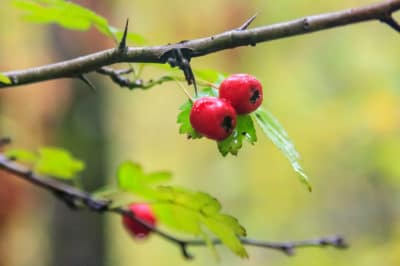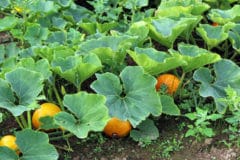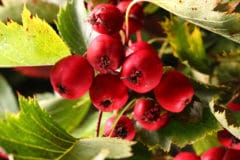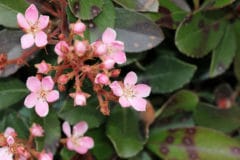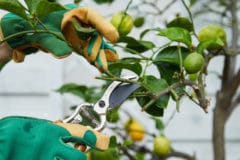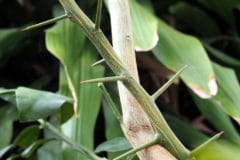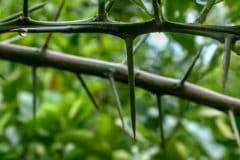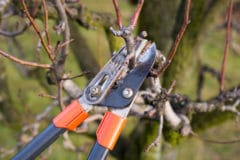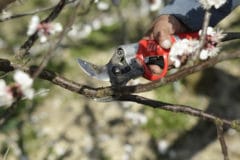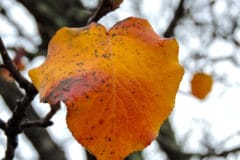Choose Carefully
Growing small-thorned or nearly thornless hawthorn varieties significantly reduces the chance of injury. Both black and common hawthorns (Crataegus douglasii,, Crataegus monogyna) have 3/8- to 3/4-inch thorns. They grow in USDA zones 4 through 8.
Then there’s ‘Winter King’ (Crataegus viridis ‘Winter King’), with everything you’d want in an ornamental tree or hedge:
- Glossy, deep-green leaves with striking scarlet and purple fall color
- Graceful cascades of white spring flowers.
- Clusters of large, bright-red fall berries that persist into winter.
- Silvery, peeling trunk bark exposing the orange inner bark beneath.
‘Winter King’s’ widely spaced, 1 1/2-inch thorns are easy to avoid or prune. The tree also resists cedar-quince rust and fire blight, two devastating hawthorn diseases.’Winter King’ grows in USDA zones 3 through 7.
Pruning Hawthorn Trees
Unless you protect yourself with the right equipment, pruning hawthorns can be like self-massaging with hypodermics.
Things You’ll Need:
- Heavy leather gloves, forearm-length.
- Eye protection.
- A bamboo pole or garden stake
- A long-reach swivel-head pruner to grab and hold the cut branches.
- A tarp large enough to bundle the pruned material.
- Garden twine.
- Scissors
- Dress in protective clothing, including the long gloves and eyewear.
- Hold a stake or bamboo pole in one hand and part the branches blocking the one you want to prune.
- Reach past the parted branches with the long pruners and make your cut.
- Grip the cut branch with the pruners and pull it free.
- Drop the branch on the ground near the tree and repeat for the remaining branches.
- Cut two pieces of tarp-length garden twine and space them 3 feet apart on the ground near the branches.
- Spread the tarp over the twine.
- Use the pruners to move the branches onto the tarp.
- Roll the tarp tightly around the branches and secure each end of the bundle with the twine.
- Move the bundle to the disposal area, unroll the tarp and release the branches. Depending on its size, this may require two people.
Expert gardener’s tip: When pruning small branches, replace the tarp with layers of newspaper.
